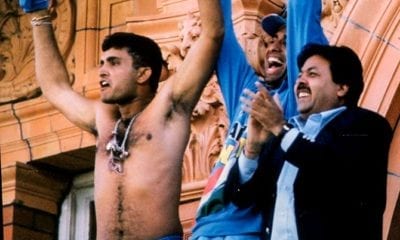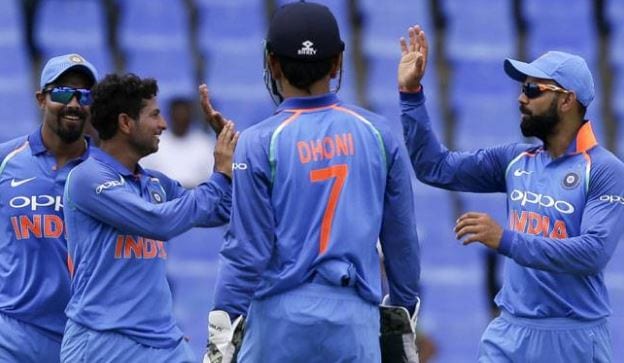Cricket
Sourav Chanidas Ganguly – The ‘Dadagiri’ Never Ends…
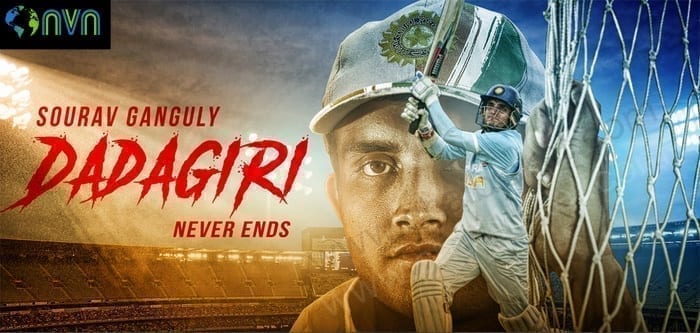
Cricket is a gentlemen’s game and when it comes to Indian cricket; it is the most benign sport through which without much aggression one can terrorize the opponent.
Generosity and softness persisted in Indian cricket till the dawn of the twenty-first century. Just then a much-awaited fierce captain arrived at the Indian cricket arena with a killer instinct and the guts and gumption to look into the eyes of the opponent and teach them in their own language, which earlier only they were accustomed to doing.
He is known for calling a spade as a spade and most essentially to induce the Team India feeling & tag and the realisation that no player is above the team, and that this is the essence to achieve success and triumph. Once called as a God of the Off-side cricket for his timing and for piercing the gaps effortlessly by none other than his teammate and ‘The Wall’ aka Rahul Dravid, he is none other than Sourav Chanidas Ganguly or simply The ‘Dada’ of Indian cricket. Let’s now take a glimpse of his ‘Dadagiri’ in Indian Cricket and how he took India to newer & bigger cricketing heights.
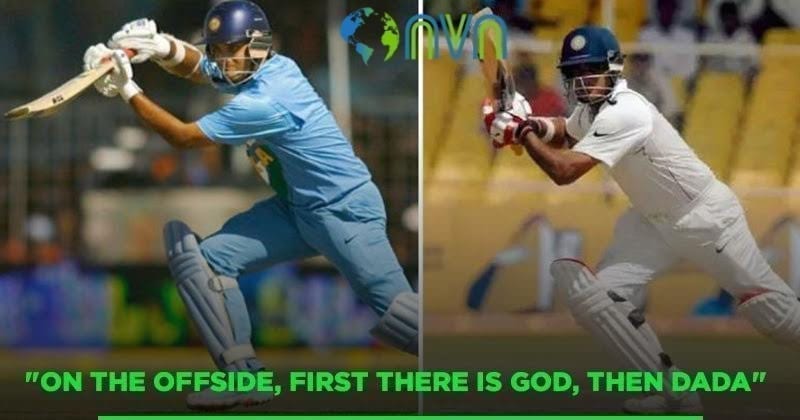
On The Offside, First There Is God, Then Dada
Sourav Ganguly was born on the 8th of July 1972 in Kolkata and was the youngest son of Chandidas and Nirupa Ganguly. Chandidas ran a flourishing print business and was one of the richest men in the city and at one point of time, his business was the third-largest in Asia in the same product category. Since the much-loved sport of the people of Kolkata was football, Ganguly at the beginning was very fascinated about this sport. However, academics came in between his adoration for sports, and further his mother was not very supportive of Ganguly taking up cricket or any other sport for that matter as a career.
By then, his elder brother Snehasish was already an established cricketer for the Bengal cricket team. He propped up Ganguly’s dream to be a cricketer and asked their father to get him enrolled in a cricket coaching camp during his summer holidays.

Dada With Family
Despite being right-handed, Ganguly learned to bat left-handed so that he could use his brother’s sporting kit. After he showed some promise as a batsman, he was enrolled in a cricket academy. An indoor multi-gym and concrete wicket was built at their home, so he and Snehasish could practice the game. They used to watch a number of old cricket match videos, especially the games played by David Gower, whom Ganguly admired most. After he scored a century against the Orissa Under–15 side, he was made captain of St Xavier’s School’s cricket team.
After that, he has never turned back and his sportsmanship and consistency earned him a place in Bengal in 1989 in Ranji – Trophy, premier first-class cricket tournament of India. Following a prolific Ranji season in 1990–91, he got a call for national duty for India’s Australia tour of 1991-92. But he miserably failed as he scored just three runs in his One Day International (ODI) debut for India against the West Indies in 1992. He was dropped immediately since he was perceived to be arrogant and his attitude towards the game was openly questioned.
He toiled hard in domestic cricket, scoring heavily in the 1993–94 and 1994–95 Ranji seasons. Following an innings of 171 in the 1995–96 Duleep Trophy, he was recalled to the National Team for a tour of England in 1996. Then came a historic moment, when Ganguly made his Test debut against England in the Second Test of a three-match series at Lord’s Cricket Ground alongside Rahul Dravid. England had won the First Test of the three-match series and India was looking down the barrel and in the Mecca of the cricketing ground, i.e. Lords – India was in a dire state and was required to salvage some pride in the series. Ganguly scored a century, becoming only the third cricketer to achieve such a feat on debut at Lord’s, after Harry Graham and John Hampshire. Andrew Strauss and Matt Prior have since accomplished this feat, but Ganguly’s 131 still remains the highest by any batsman on his debut at the ground.
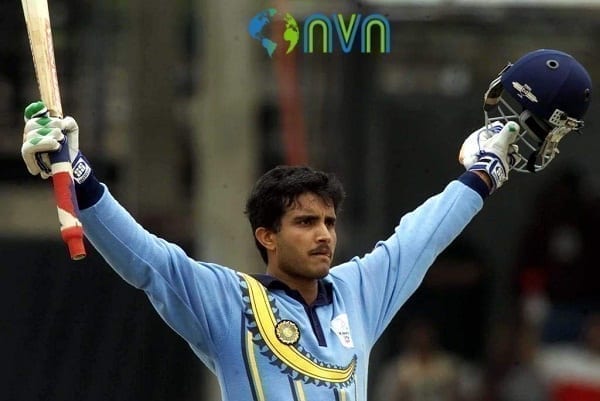
Dada At His Cricketing Best!
India was not required to bat in the second innings due to the match ending in a draw. Ganguly continued his prolific run as in the next Test match at Trent Bridge, he made 136, thus becoming only the third batsman to make a century in each of his first two innings (after Lawrence Rowe and Alvin Kallicharran). He shared a 255 run stand with Sachin Tendulkar, which became at that time the highest partnership for India against any country for any wicket outside India.
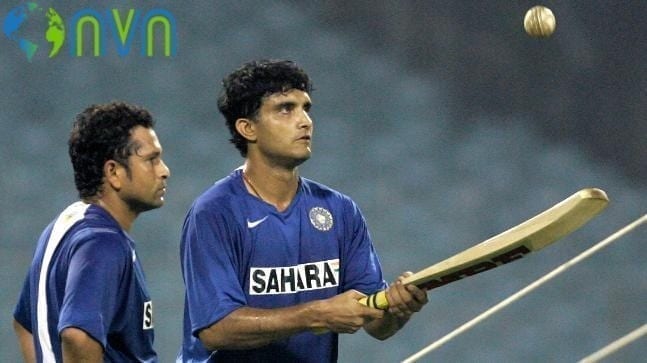
Dada & Sachin Partnership
He did not stop there as he marched on to pile runs against Sri Lanka, Pakistan, and Australia, winning the Man of the Match awards on several occasions. These match-winning performances cemented his place in Indian cricket.
History was not leaving Sourav as in his maiden world cup cricket in 1999 he scored a blistering 183 against the defending champion, Sri Lanka, and was involved in a partnership of 318 runs with Rahul Dravid, which remains the highest overall partnership score in the World Cup tournament history. The highlight of the innings was an effortless and elegant stroke-making of the southpaw and of hitting the spinning wizard Mutaih Muralitharan out of the boundary with ease and grace.
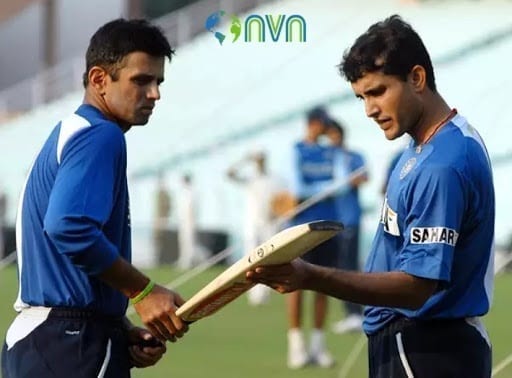
Dada & Dravid Partnership
Sourav Ganguly continued his fabulous cricketing journey and he was thereafter made the captain of India. This was after the match-fixing scandals in 2000 which involved other players in the team, and for his poor form, then Indian captain Sachin Tendulkar resigned from his position, and Ganguly was then made the captain of the Indian cricket team. This was the most turning point of Dada’s career, as from that moment – Indian cricket which was in shambles, rose like never before. Few could have expected India’s rising from the bottom as Ganguly had to start from scratch though with a bunch of highly talented youngsters like Shewag, Laxman, Yuvraj, Kaif, Harbhajan and Zaheer. It made Dada tougher and he started backing his young guns even if they used to fail in their initial outings. He made some tricky decisions like promoting Virendra Shewag to open the inning, a player who was heavily criticized for lack of footwork. He not only piled up century after century in test cricket but was brutal and could terrorize the bowlers through his own hand-eye coordination style.
India started to win test matches in the most alien conditions which was a dream for India for a long time. The tag of poor travellers started to rub off gradually.
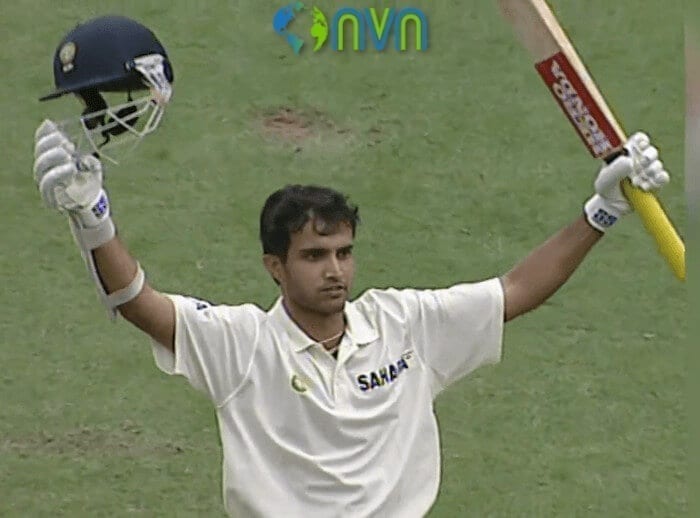
Dada Proved His Mettle In Test Series
Dada’s most stern test came when India played the home test-series against the most invincible mighty Aussies in 2001. Australia had a world record of winning 15 tests on a trot and India had to salvage their home record against them. After losing the first test miserably India had to play out of their skin to save the series in Eden Garden. Then came another historic moment in Dada’s career when asked to follow on, a marathon partnership of 376 runs was built between VVS Laxman and Rahul Dravid. Laxman’s epic inning of 281 not only saved the test but handed Australia their first defeat after 15 test wins.
Another career-changing moment came in Dada’s sports journey in 2002 in Nat West Trophy final against England. In those days India was a poor chaser in One-dayers and winning the toss England piled a mammoth score of 325 in the fifty overs. In those days scoring beyond 300 was next to impossible while batting second. But India made history by winning the cliff-hanger by two-wickets, thanks to two young stalwarts Yuvi and Kaif. The Dadagiri did not end there as a bare-chested Ganguly started waving his shirt around on top of Lord’s balcony as soon as the winning run was scored and is still etched in the memory of every Indian fan. It was a celebration which no one would have expected? By 2004, he had achieved significant success as captain and was deemed as India’s most successful cricket captain by sections of the India and world media.

Dada Celebrates Bare Chested On Top Of Lord’s Balcony!
Meanwhile, India as a team started to achieve consistency including in 2003 world cup final – however, Sourav went through a lean patch. Following indifferent form in 2004 and poor form in 2005, he was dropped from the team in October, 2005. Most interestingly his relationship with the then Indian coach – Australian Greg Chappell was a bone of contention. As the rift between the captain and coach widened – Chappell emailed to the Board of Control for Cricket in India, stating that Ganguly was “physically and mentally” unfit to lead India and that his “divide and rule” behaviour was damaging the team. This email was leaked to the media and resulted in a huge backlash from Ganguly’s fans. Ganguly had enlisted the support from the Indian media and eventually, the board had to intervene and order a truce between the pair. As form is temporary but class is permanent, ten months later, during India’s tour to South Africa, Ganguly was recalled after his middle-order replacements Suresh Raina and Mohammad Kaif suffered poor form.
Following India’s poor batting display in the 2006 ICC Champions Trophy and the ODI series in South Africa, in which they were whitewashed 4–0, Ganguly made his comeback to the Test team. Wasim Jaffer, Zaheer Khan, and Anil Kumble had earlier been selected for the one-day squad, despite their recent poor performances. Many saw this as an indictment of coach Greg Chappell’s youth-first policy. Coming in at 37/4, Ganguly scored 83 in a tour match against the rest of South Africa, modifying his original batting style and taking a middle-stump guard, resulting in India winning the match. During his first Test innings since his comeback, against South Africa in Johannesburg his score of 51 helped India to victory, marking the first Test match win for the team in South Africa. Though India lost the series, Ganguly accumulated the most runs on the scoring chart. After his successful Test comeback, he was recalled for the ODI team – as India played host to West Indies and Sri Lanka in back to back ODI tournaments. In his first ODI innings in almost two years, he scored a match-winning 98. He performed well in both series, averaging almost 70 and won the Man of the Series Award against Sri Lanka.
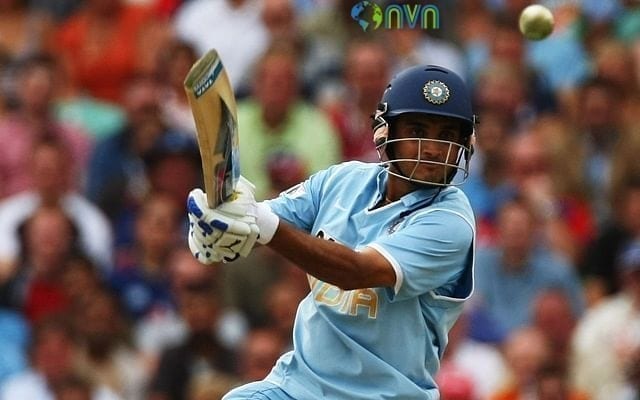
When Dada Hits Hard!
On 7 July 2008, the media reported that Ganguly was being projected as a candidate for the post of President of the Cricket Association of Bengal (CAB) against his former mentor Jagmohan Dalmiya. Reports also suggested that he could run for the post of BCCI President in 2014 as East Zone’s representative. Ganguly himself did not deny the reports and did not rule out any such move. The same year in October, Ganguly announced that the Test series against Australia starting in October 2008 would be his last and stated – “To be honest, I didn’t expect to be picked for this series.” Ganguly played in every game of the four-Test series and amassed 324 runs at an average of 54.00. While playing the second Test match of the series in Mohali, Ganguly scored his final test century. In the final test match, he played at Nagpur against Australia he scored 85 and 0 in his first and second innings respectively. In the fourth and final Test, with India needing one wicket to secure a victory, the Indian captain, Mahendra Singh Dhoni, invited Ganguly, the then most successful captain for a befitting send-off to lead the side in the field for the final time. India regained the Border-Gavaskar Trophy, winning the series 2–0.
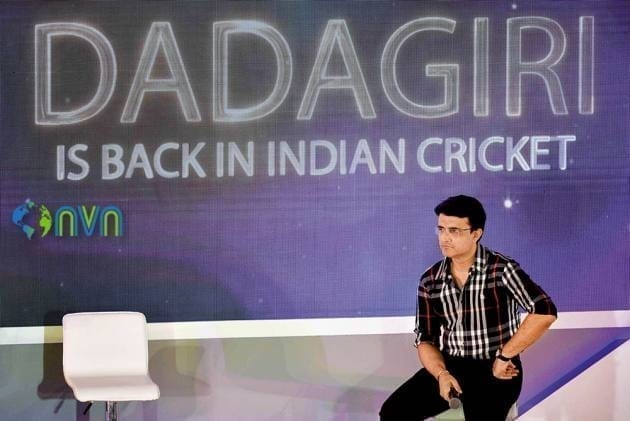
‘Dadagiri’ Is Back In Indian Cricket!
The retirement did not end his association with cricket as from 2015 to October 2019 he was the President of the Cricket Association of Bengal. In October 2019 he became President of the Board of Control for Cricket in India.
It must be noted that in ODIs, where Ganguly usually opened the innings, he used to try to take advantage of the fielding restrictions by advancing down the pitch and hitting pace bowlers over extra cover and mid-off. Ganguly was also notorious for attacking left-arm spin bowlers. Due to the excellent eye-hand coordination, he was noted for picking the length of the ball early, coming down the pitch and hitting the ball aerially over mid-on or midwicket, often for a six.
Ganguly and coach Jhon Wright, along with other members of the team like Tendulkar and Dravid, were the first to understand the importance of a foreign coach for the Indian cricket team and was convinced that a domestic coach had outlived its utility. Ganguly’s aggressive style and Wright’s importance on fitness ushered in the development of a better cricketing team for India.
Statistics about Ganguly show that he was the seventh Indian cricketer to have played 100 Test matches, the 4th highest overall run-scorer for India in Tests, and the fourth Indian to have played in more than 300 ODIs. In terms of overall runs scored in ODIs, Ganguly is the second among Indians after Sachin Tendulkar (who has the most ODI runs) and the eighth overall. He has scored 16 centuries in Test matches and 22 in ODIs. He is also one of only ten batsmen to score more than 10,000 runs in ODIs. Along with Tendulkar, Ganguly has formed the most successful opening pair partnership in the One Day Cricket, having amassed the highest number of century partnerships (26) for the first wicket. Together, Ganguly & Tendulkar – they have scored more than 7000 runs at an average of 48.98, and hold the world record for building the most number of the 50-run partnership for the first wicket (44 fifties). Ganguly became the fourth player to cross 11,000 ODI runs and was the fastest player to do so in ODI cricket, after Tendulkar. As of 2006, he is the only Indian captain to win a Test series in Pakistan (although two of the three Tests of that series was led by Rahul Dravid). He is also one of the five players in the world to achieve the amazing treble of 10,000 runs, 100 wickets and 100 catches in ODI cricket history, the others being Tendulkar, Kallis, Sanath Jayasuriya, and Tillakaratne Dilshan.
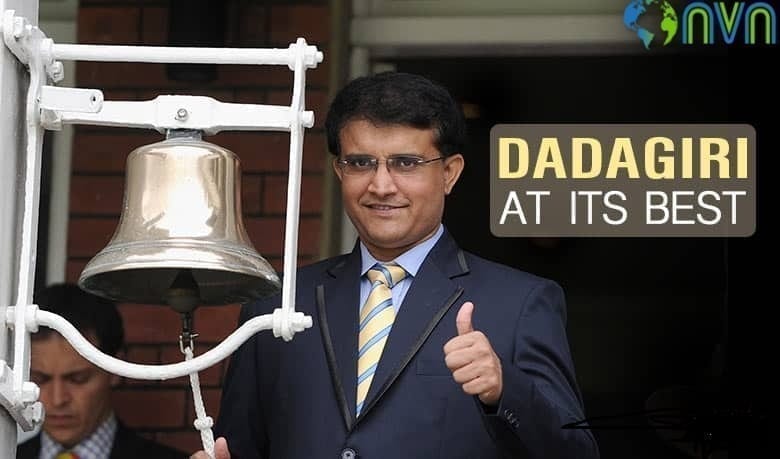
Dadagiri At Its Best…
Ganguly’s greatest legacy lay in his influence on the younger and budding generation of cricketers. Ganguly felt that every young player should play two years of domestic cricket before being selected for international assignments. He also said that every newcomer should be given at least five games to prove himself. Later he explained that being at the receiving end of an unfair decision against him, that threatened to ruin his international cricket career, it enabled him to understand the insecurities of other newcomers in the team better than his predecessors. Ganguly had always backed the influence and contribution of the younger players in the team.
He is regarded as one of India’s most successful captains in modern times, and one of the greatest ODI batsmen of all time. Currently, he is the 8th highest run-scorer in One Day Internationals (ODIs) and was the 3rd batsman in history to cross the 10,000 run landmark, after Sachin Tendulkar and Inzamam Ul Haq. In 2002, the Wisden Cricketers’ Almanack ranked him the sixth greatest ODI batsman of all time, next to Viv Richards, Sachin Tendulkar, Brian Lara, Dean Jones, and Michael Bevan.
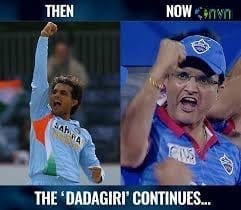
Sourav Ganguly – The ‘Dadagiri’ Continues…
Now as Dada is a forerunner to become the next ICC president, not only India but the world has noticed his contribution and importance and Dadagiri in the world of cricket.


